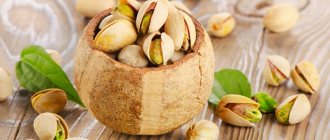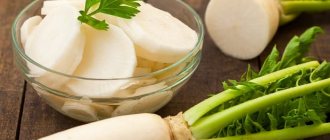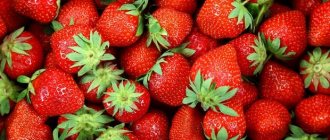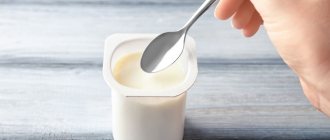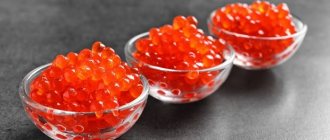Banana is an edible fruit that has a pleasant taste, it is healthy and nutritious. This is a dietary product; 100 grams of fresh fruit contains approximately 96 kilocalories. Fruits must be included in the menu. These tasty fruits are very healthy. Even one banana contains a sufficient amount of benefits; the fruit will satiate hunger well, giving a feeling of fullness, will lift your spirits, its composition is rich in vitamins and minerals.
Scientists have confirmed that if you eat four fruits a day, you will cover the daily requirement of magnesium and potassium - elements that are necessary for the proper functioning of the heart. The benefit of bananas is that the fruit is considered an effective preventive measure against atherosclerosis. The fruit normalizes vision due to its vitamin A content and carotenoids.
Yellow fruits will bring benefits to people during the recovery period after illnesses. They can be included in the menu of patients suffering from diseases of the gastrointestinal tract.
The fruits have delicate pulp and can be used to feed children. They can be added to the baby’s diet in the first 12 months of life. Experts advise doing this after 10 months, when the baby is already familiar with many complementary feeding products. Almost all children like the sweetness of the pulp.
What is a banana: a fruit or a berry?
Many people are accustomed to thinking that banana is a fruit that grows on palm trees. But is it? Is banana a herb or a tree? It is a fruit that grows on a herbaceous plant. Although it is called a “banana tree,” it is not considered a tree at all. In fact, these are leaves with something resembling a palm tree at the top. The flower grows in a stem located directly in the center of these leaves. Although banana grass can grow to quite large sizes, the plant can be confused with a palm tree.
Since banana fruits do not grow on a tree, but on a herbaceous plant, from a botanical point of view, they are considered berries.
History of the plant
The Malay Archipelago, the islands located between Australia and Southeast Asia, is considered the homeland of the banana family. The first mentions of the plant are found in the ancient Indian texts Ramayana and Rigveda, written more than 1000 BC. e. From Asia, Arab traders brought bananas to Africa, where they easily acclimatized and spread widely.
The plant came to the New World at the beginning of the 16th century. thanks to the Franciscan monk Thomas de Berlanga, the future archbishop of Panama. By the end of the 16th century. the fruit has already taken root in Central America.
Lorenzo Baker and Minor Keith popularized the banana in the United States by solving the problem of transporting the fruit from the tropics. At the beginning of the 20th century. exotic fruits reached Europe.
In the last decade, bananas are in 12th place in terms of yield among plant crops.
Vitamins and calories
The beneficial properties of bananas are numerous; the fruits have a rich chemical composition. How many vitamins are in bananas? The fruit contains the following beneficial substances:
- Ripe fruits contain natural sugars, fiber, essential oils, carbohydrates, proteins, pectins and many other useful substances. It has high energy value and nutritional value.
- Organic acids and dietary fiber, a healthy fruit can be safely included in the menu of young children.
- The microelements that are of greatest value are potassium and magnesium. Moreover, banana, when compared with other berries and fruits, is almost a record holder in terms of the content of these elements. How much magnesium is in a banana? One fruit contains about 32 mg of this element, which is 8% of the daily requirement. These microelements are needed for the normal functioning of the brain, cardiovascular system, and heart muscle. If you consume at least two fruits a day, the deficiency of essential, beneficial microelements will be completely compensated.
- Many people are interested in whether bananas contain iron. 100 grams of product contains approximately 0.5 mg of this substance. Iron is necessary for the production of hemoglobin. With a lack of this element in the body, iron deficiency anemia develops.
- The amino acids included in the composition also provide benefits, supporting the functioning of all internal organs.
- The composition includes fats, choline, beta-carotene, malic acid.
What vitamins do bananas contain?
- B vitamins - normalizes the functioning of the heart muscle and thyroid gland, improves metabolism.
- Ascorbic acid is the strongest natural antioxidant. Takes part in metabolic processes and plays an important role in the functioning of the whole organism.
- Vitamin A - helps improve the functioning of the sex glands. Improves and maintains vision, especially at night, reduces glaucoma.
- Vitamin K prevents the development of tumors of the gastrointestinal tract. Normalizes kidney function.
If we talk about the calorie content of a banana, this figure may differ. This value is influenced by the degree of maturity of the fetus. Green fruits contain the fewest kilocalories - about 90. Ripe fruits have an energy value of up to 120 kilocalories. If the fruit is overripe, then 100 grams can contain up to 180 kilocalories.
Although bananas are not considered a diet food, they do not need to be completely excluded from the daily diet of people watching their weight. This is due to the fact that the fruits are very nutritious and contain beneficial fibers, half of which dissolve. Fiber, reaching the digestive tract, slows down digestion and becomes saturated with water. Your stomach is full and you don’t want to eat.
The product quickly satisfies the feeling of hunger by enveloping the walls of the stomach, providing it with protection. It will benefit people who are watching their figure and those who are on strict diets - they are recommended to include healthy fruit in their diet to avoid breakdowns.
Is it allowed to eat if you have gastrointestinal diseases?
Banana is very good for the stomach. However, in some pathologies it is worth consuming it carefully.
For gastritis
Gastroenterologists recommend eating yellow fruits for various forms of gastritis, while other fruits and berries should be excluded. The fibrous pulp will benefit patients with a chronic form of the disease and in the acute stage.
For pancreatitis and cholecystitis
Pancreatitis is a pathology expressed in inflammation of the pancreas. Treatment is comprehensive and involves a special diet. You can include fruits in your diet, but you should be careful when consuming them. It is better to consult a specialist.
For cholecystitis, it is important that the diet contains a balance of vegetable and animal fats. Eating berries is not only possible, but also necessary. The fruits can be consumed both raw and cooked. For example, in the composition of mousses, jelly, sour jam.
How much protein, fat and carbohydrates does it contain?
The biochemical composition of bananas is diverse. In addition to the vitamin and mineral complex, fruits contain fiber, sugar, saturated acids, carbohydrates, proteins, and fats. The protein content of a banana is 1.5 g per medium fruit, fat – 0.5 g, carbohydrates – 21 g. It is clear that this healthy product is carbohydrate. Accordingly, the disclosure of the positive qualities of the product occurs after physical activity. Eating fruit before classes will help you get slow carbohydrates - you won’t feel hungry for a long time. It is useful to eat fruits with dairy products after physical activity for those who want to build muscle.
Application in dietetics
The BRAT diet, based on bananas, rice, apples and toast, is recommended for people with chronic diarrhea, vomiting, gastroenteritis. These products are easy to digest and improve the functioning of the gastrointestinal tract. They eat this way for less than a day, supplementing the diet with enough liquid.
The banana diet for weight loss is followed for no longer than 3 days due to the sharp load on the body.
During the day they eat up to 1.5 kg of fruit. In addition to the fruit pulp, they drink water and tea. To consolidate the result, it is recommended to add 1-2 fruits to the daily diet for 2-3 weeks.
Banana diet.
Which are healthier - green or yellow?
Which bananas are healthier, green or ripe? In most cases, yellow bananas are eaten, but there are also those who prefer unripe fruits with green skin and harder flesh. However, which bananas are the healthiest - ripe or green? Which ones will bring more benefits to the body, and could it be that the fruit is harmful to health?
Green bananas are not fruits that have not yet ripened, but specially grown varieties called “plantains.” In countries where green bananas grow, they are boiled, fried, cooked in sugar syrup, stewed and blanched. After processing, bananas taste better and are better digestible. These fruits are higher in calories and rich in starch. Per 100 grams of pulp there are 120-125 calories.
It is believed that small plantains are very useful. This variety is called “vegetable”. The fruits normalize blood pressure and prevent the development of hypertension and atherosclerosis.
This product contains the largest amount of potassium (490 mg per 10 o g), which normalizes the functioning of the nervous system, heart and blood vessels. Green fruits will benefit the musculoskeletal system, preventing the leaching of potassium from the body.
This product can be included in the diet of people who suffer from stomach ulcers, constipation and intestinal disorders.
general characteristics
Bananas are exotic, elliptical-shaped fruits with creamy flesh covered with a dense, inedible peel. The banana tree can grow from 3 to 6 m in height. Fruits are formed in groups of 50-150 pieces, which are combined into clusters of 10-25 pieces.
Today, biologists know many varieties of bananas, but the most popular is the Cavendish. It is this variety that most often appears on our shelves. And it received its strange name in honor of the Englishman William Spencer Cavendish, who actually brought this variety from the Mascarene Islands around 1826 and began actively growing fruit in greenhouses [3].
In addition, all edible varieties of bananas known today are divided into two groups: dessert and vegetable (plantains) [4]. Representatives of the first variety may differ in taste, color and size. They come with red, pink, purple and even black skin. Vegetable varieties are valued for their high concentration of beta-carotene.
Benefit
Bananas are an excellent source of energy and have many beneficial properties for which they are especially valued.
Energizes
Due to the high energy value of a banana, this product will be an excellent snack, since it supplies the body with slow carbohydrates, which are subsequently converted into energy. After physical activity, they will be used by the body to replenish energy reserves and restore muscle fibers.
Contains manganese and potassium
The benefit also lies in the fact that they improve the condition of bones, skin and normalize brain function, thanks to the high manganese content. One average fruit contains about 0.2 g of this element, which is 16% of the required daily value. The potassium content in a banana is 420-490 mg (12% of the daily value).
The benefits of manganese are important for the body of women and men. The mineral affects the health of the skeletal system and makes the skeleton strong. Thanks to a sufficient amount of manganese, the production of collagen is enhanced - a substance that makes the skin beautiful and elastic.
Calcium is useful in the formation of the skeleton. The benefit of calcium is that it takes part in the process of hormone production in the body. Deficiency of manganese and potassium provokes the development of problems in almost all internal organs.
Cheer up
What benefits can fruits bring to your mood? The fact is that it contains tryptophan, a substance that normalizes the level of serotonin, known as the “happiness hormone”. Thanks to the optimal level of this hormone, a person is in a good mood. It helps avoid irritation and depression.
Affects the intestines
Another benefit of bananas is that they help improve digestive processes. One fruit contains approximately 3 g of fiber, which corresponds to 10% of the recommended daily intake. This substance prevents constipation, increased gas formation and other gastrointestinal problems. Fruit fiber helps restore the intestines and support its normal functioning, as well as remove toxins and other harmful substances from the body.
What is useful for women
Women are advised to include bananas in their diet during menstruation as they help relieve muscle spasms. The product will benefit women who are subjected to severe physical and intellectual stress. In addition, bananas lift your mood and help get rid of depression.
Since the fruits quickly satisfy the feeling of hunger, they can also be consumed by women who are on a strict diet and want to get rid of extra pounds. The main condition is that there will be benefits only if you observe the measure.
During pregnancy
Due to the large amount of useful substances in bananas, pregnant women can eat it. Bananas promote the production of oxytocin, a hormone important for the proper development of pregnancy and improves lactation.
These healthy fruits are also recommended to be consumed during pregnancy, as they contain many vitamins and minerals necessary for the expectant mother and child.
Possibility of allergies
The berry rarely leads to allergies. However, you should make sure when giving your child a banana that this will not lead to the development of adverse reactions. It is administered with extreme caution as complementary food for babies. If any allergic reactions occur, you should stop consuming the fruit.
What are the benefits of eating bananas for men and women. Is it possible to eat bananas during pregnancy and during breastfeeding, and at what age should they be introduced into the child’s diet?
Benefits for children
How are bananas good for babies? For an actively growing and developing organism, the benefits are very high. The high content of nutrients satisfies the needs of the child's body. Experts advise eating these fruits every day, of course, without overusing them if there are no contraindications.
Bananas will benefit the children's nervous system. The baby will be less capricious and irritable, the vitamin composition has a calming effect on the child. Fiber helps normalize digestive processes and improve bowel movements.
Possible hazardous properties
The fruits, eaten in moderation, do not cause any significant side effects. However, excessive consumption of exotic fruits (more than five bananas a day) can cause headaches and drowsiness. This is especially true for overripe bananas. In rare cases, they can cause hyperkalemia, an increased concentration of potassium in the blood. Eating sweet fruits too often is not good for your teeth - it leads to the destruction of enamel.
Bananas can cause one type of food allergy - the so-called latex-fruit syndrome. This disease is the result of an immune system reaction to proteins found in natural rubber and certain substances found in bananas. By the way, this type of allergy can also be caused by kiwi, papaya, tomatoes, potatoes and avocado.
Harm
Any product can not only be useful, but also cause some harm. Why are bananas dangerous? There are diseases for which it is undesirable to include this product in your menu. These include:
- diabetes;
- increased blood viscosity;
- damage to the heart muscle;
- thrombophlebitis.
Doctors do not advise obese people to abuse the product, as these fruits lead to an increase in blood sugar. For a person in good health, it is advisable to eat no more than two fruits per day. If we talk about people who suffer from diabetes, then this issue needs to be resolved with their doctor.
Contraindications
There are several signs that indicate that a person should not overuse bananas. So, what symptoms indicate that a banana may be harmful to your health?
- excess weight, tendency to obesity: the amount of fruit sugar is quite large, therefore, if the fruit is consumed excessively, weight may begin to increase;
- diabetes mellitus: banana is highly sweet, so in case of diabetes it can worsen the patient’s condition;
- a feeling of heaviness in the stomach, bloating: a banana itself takes a long time to digest, so you should not eat it on an empty stomach, especially when combining it with water or milk;
- thrombophlebitis - with an increased tendency to form blood clots, the fruit is very dangerous, as it thickens the blood.
According to some reports, bananas are dangerous for children during intrauterine development due to the risk of developing allergies if they are frequently consumed by the expectant mother.
In part, bananas also interfere with male potency due to their ability to thicken the blood - because of this, the onset of an erection slows down.

